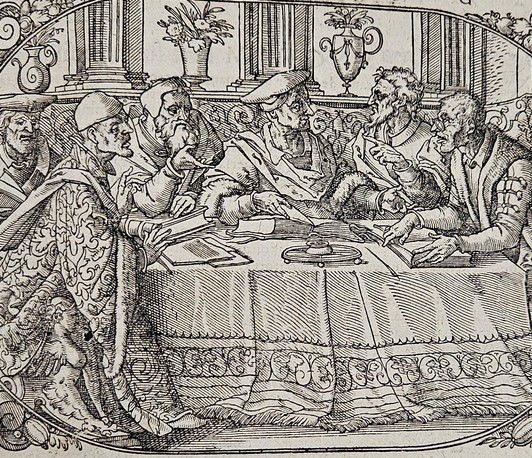"Correcto in hoc iure communi". Motivación de las sentencias en la Cataluña altomoderna
Seminario Permanente
- Date: Sep 16, 2025
- Time: 01:00 PM - 02:00 PM (Local Time Germany)
- Speaker: David Irazabal Martinez (Pompeu Fabra University, Barcelona)
- Location: mpihlt and online
- Room: A 601
- Host: Dr. María del Pilar Mejía Quiroga
- Contact: mejia@lhlt.mpg.de

The early modern communis opinio, primarily drawing upon the decretal Sicut nobis (X 2.27.16), discouraged, for prudential reasons, the disclosure of the causa of the judicial decision in the sentence (or judgement) that settled the dispute between the parties (expressio causae in sententia). In general terms, European as well as overseas high courts followed the dominant doctrine of ius commune, with the respective variants that developed in each case from the adaptation of the communis opinio to local circumstances. Thus, the usus fori of Castilian Audiencias opposed disclosing the causa in the sentence, with a particular emphasis on the secrecy of the judges’ votes. There were, however, notable exceptions. For instance, in the judicial practice of the Rota Romana, the parties were made aware of the court’s reasoned resolution of the doubtful aspects of the case (dubia) in an act called decisio. Moreover, the judicial style of the Crown of Aragon and of Portugal opted for the opposite model, i.e. to disclose, in the sentence, the motive causes of the judicial decision. Note that this judicial practice – albeit contrary to ius commune doctrine – did not cease to use the terminology, categories, and concepts of the doctrine of the expressio causae in sententia. We will delve into the adaptation, accommodation, or transformation – translation –, in this case in a corrective sense, of the ius commune doctrine on the expressio causae in sententia in the judicial practice and style of the Real Audiencia of Catalonia in the early modern period (1493–1639).